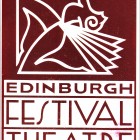Dido and Aeneas 1994English Bach Festival
Read more about the opera Dido and Aeneas
In the early years after its restoration, the management of the Edinburgh Festival Theatre adopted the wonderful practice of importing productions for one-off events outside the normal Festival season. Inevitably the economics of this rarely worked out, and such events no longer occur, to everyone's loss. This two night visit by the English Bach Festival company was an excellent opportunity for Scottish audiences to become acquainted with unusual items performed in period style. Gluck's most popular work was delivered in its far less frequently heard Paris revision, with Orpheus rewritten for high tenor. While Dido and Aeneas was hardly a rarity, the concept here, of including a prologue, also made it a worthwhile exercise.
The English Bach Festival Trust was founded in 1962 under the direction of harpsichordist Lina Lalandi, initially to perform the works of Bach in authentic style. The succession of Honorary Presidents recruited included Albert Schweitzer, Igor Stravinsky and Leonard Bernstein. It quickly widened the repertoire to other baroque masters including Purcell and Handel. Perhaps the greatest contribution, through the seventies, came with the exploration of the far less known French Baroque, and the numerous British premieres of works by Rameau came as a particular revelation. The stagings eventually toured to many of the major European houses. Performances were often given on Sunday evenings at the Royal Opera House, with reconstructions of period sets and costumes, and an attempt at authentic choreography. The musical standards were high, with many great singers and conductors taking on works they would have little chance to do again.
Before coming to Edinburgh, these two productions, Orphée et Euridice and Dido and Aeneas, had already been seen at Covent Garden, Versailles, Athens (the Herodes Atticus amphitheatre), Monte Carlo, Granada, Paris, Madrid and Rome.
The sets were generally in authentic period style, so could be adapted for use in a number of operas. The same went for the elaborate costumes. The real interest came in the dance sequences, very different from later ballet, and of course the singing and orchestral playing. There was a welcome opportunity to see again a group of British singers - Russell Smythe, Della Jones, Marilyn Hill Smith - who perhaps worked more abroad than they did in Scotland. And it was still quite a novelty to have Dido and the Sorceress interpreted by the same singer - even without her pinching the Spirit for good measure (presumably the Sorceress in disguise). This evening also marked the Scottish debut of conductor Marc Minkowski, who went on to become one of the leading interpreters of the French Baroque, while also casting fresh light on later masters such as Berlioz and Bizet.
A real novelty was the extension of the evening by the addition of a Prologue in which the principals performed. This involved Phoebus (Russell Smythe), Spring (Marilyn Hill Smith), Venus (Della Jones), Triton (Robert Challenger) and two characters known simply as She and He (Anne O'Neill and Roger Langford). Dido only required a chorus of four voices, and these were provided by the small-part singers listed. There were also four dancers, led by the choreographer herself.
Performance Cast
- Belinda a lady in waiting
- Dido Queen of Carthage
- Second Lady
- Aeneas a Trojan prince
- Sorceress
- First Witch
- Second Witch
- Spirit in the form of Mercury
- Sailor
